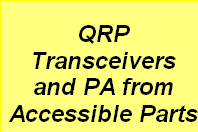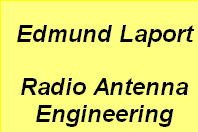

Antentop is FREE e-magazine devoted to Antennas and Amateur Radio an
Special page devoted to
Antenna Installations: Fact and Fiction

Custom Search
|
ANTENTOP- 01- 2018 # 022 |
Antenna Installations: Fact and Fiction |
|
FICTION: Impedance matching between antenna and load is not too important-you
can't see the difference. FACT: if you have more signals than you need, you may not see the effects
of mismatch in terms of signal strength, because the set has A.G.C.
You may, however, see the secondary effects of mismatch, since
a mismatch always causes reflections in the line. These reflections
can produce line ghosts- close-in- ghosts that may be so near
the primary image as to look smear. Also, the tuner response will change when it sees a
mismatch at the input causing degraded picture resolution on monochrome
and kill all kinds of difficulties in color reception. FICTION: It takes an antenna with a very narrow forward lobe to eliminate a ghost. FACT: Not so. The ghost elimination depends on the antenna pattern having
a sharp null, which may be oriented to ghost source, without moving
the pickup lobe too far from the best reception angle. At the
high band, for the example, an ordinary broadband conical antenna
may do better than a YAGI type, because the conical has three
major pickup lobes at the high band. (See radiation patterns,
Figure 1) Also there are several null points from
which to choose. This permits considerable flexibility in orienting
the antenna so that it may select the desired signal while rejecting
the reflected one.
Figure 1 Antenna Pattern for YAGI and Conical TV Antenna |
If a solid sheet of metal is used as the screen, the
edges of the sheet radiate, and the pattern of radiation is practically
circular, so the same end is practically circular, so the same
end result ensues. This is not mere theory. We have seen it tried
more than once. |
|
FICTION: An antenna may be shielded from interference with a screen made of metal
mesh or sheet metal. |
In one case a screen bigger than a billboard was erected
to cut off co-channel interference. It actually seemed to make
matters worse. |
|
|
|
|
Page- 6 |
 |
 |
|
 |
|
|
|||
Just for Fun:

Powered byIP2Location.com
Thanks for your time!
Last Updated:
January 2, 2020 21:16







